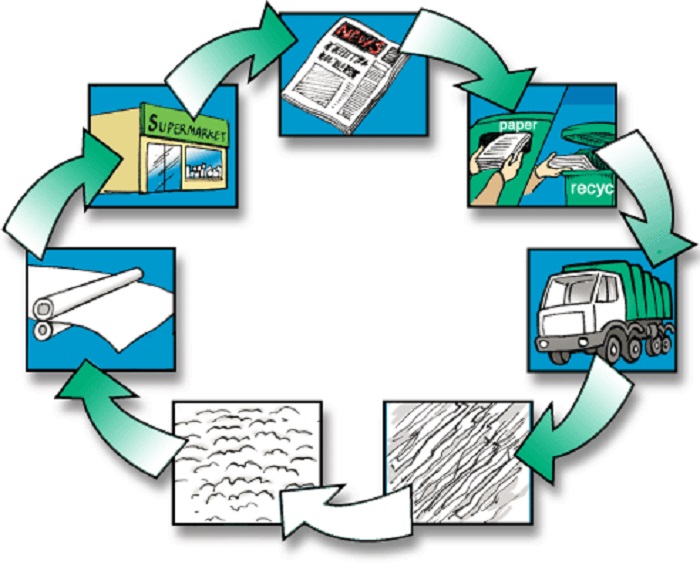Using recycled paper will save a lot of money and human resources for businesses and society, not to mention the environment is better protected. So, what is the process of making recycled paper?

Selecting waste paper
The first step to take is to select clean scrap paper, free from impurities, dirt, plastic, metal, etc., because those impurities will make it difficult to recycle. If there is too much dirt, it will not be recycled, but it can still be used to make fertilizer or utilize heat by burning.
Making pulp and de-inking
When the process of selecting and collecting waste paper is complete, it will be sent to a recycling plant where contains water and chemicals used to make recycled paper into powder. Waste paper is cut into small pieces and beaten to create a flexible mixture.
Next, the powder mixture is taken to holes and grooves to screen for small impurities such as nylon, tape…
The next step is to clean and deink to completely remove ink and adhesives. Next is using chemicals such as soap in the powder to help separate the ink and adhesive tape from the powder and push them to the surface.
Grinding, bleaching and whitening paper
While grinding, the pulp will be pounded to make the cotton fibers up, in preparation for the papermaking. If there are many large fibers in the dough, the step will separate them. If there are colors in the paper, the bleach will remove them.
If the product requires white paper, the powder needs to be bleached with hydrogen peroxide, chlorine dioxide or oxygen chemicals to make the powder white and brighter. For industrial brown paper such as carton, bleaching is not necessary.
Making paper
This is the most important step in the waste paper recycling process. The powder will be mixed with water, using a mesh mold to coax the mixture of paper water and gently shake it to release the steam. At this time, the pulp will be deposited on the mesh membrane. Pulp will be moved quickly through a type of press roller covered with canvas to help squeeze out the water before drying them.
Is all scrap paper recyclable?
In fact, this process is applied only at most 80% of the recovered paper. Many things are in paper bags that are not paper. Wastes such as wire, staples, and pins must be removed when flouring, cleaning and screening.
Recycled paper has fibers that are already too small to continue to be recycled. The recycled paper in use may contain fibers that have been recycled many times so it is difficult to recycle them again because they have become too short and brittle to make new paper.
